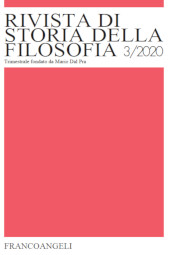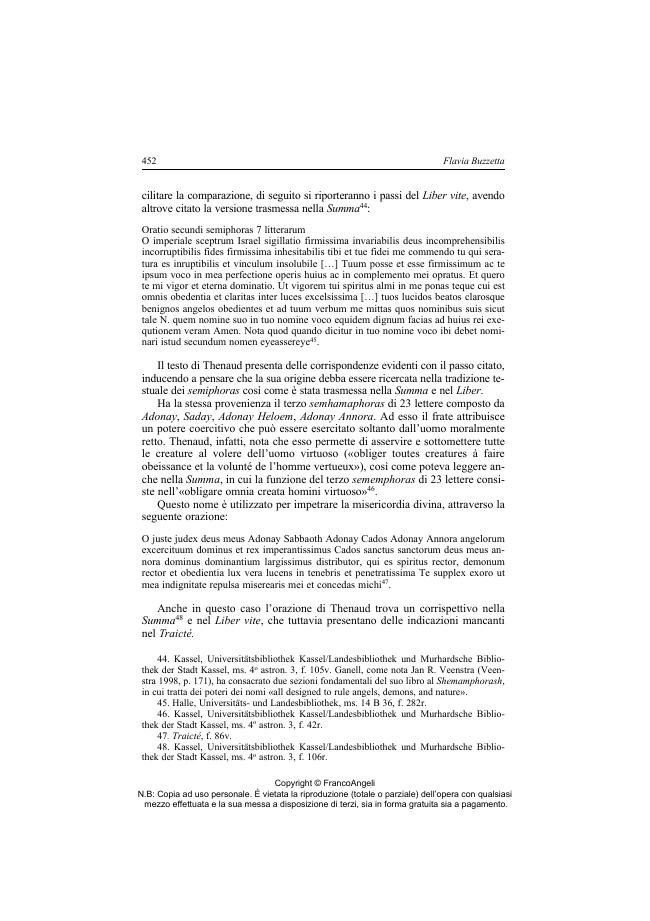Un approccio "eterodosso" alla cabbala nel XVI secolo : la Très chrétienne Cabale di Jean Thenaud
443-460 p.
A Heterodox Approach to Kabbalah in the Sixteenth Century: The Très Chrétienne Cabale of Jean Thenaud. The Article will examine the heterodox Kabbalah of the friar Jean Thenaud (1480-1542), who transforms Jewish mysticism into angelic magic. The study focused especially on the notion of Practical Kabbalah and its underlying magical and mystical goals. Jean Thenaud was a Franciscan monk who was a major contributor to the birth of Christian Kabbalah in France. Used for the first time in 1486 by Giovanni Pico della Mirandola in his Conclusiones, the term practical kabbalah (pars practica scientiae cabalae, cabala practica or opus cabalae in latin) refers to the practical aspect of a universal system of knowledge, which links kabbalah and magic (magia naturalis). It could be considered either as a form of kabbalah, which contains some characteristics and practices similar to those used in magic, or alternatively a magic which incorporates some core ideas of kabbalah.
Thenaud uses in his works the Pichian notion of Practical Kabbalah emphasizing its magical dimension and attributing to it the ability to regenerate through its practice human nature and to modify one's existence. This aspect emerged in particular in the Traicté de la Cabale or La Cabale et l'estat du monde angélic ou spirituel (1520-1521) in which, by harmonising elements taken from Christian Kabbalistic and Magical rituals sources, the Franciscan introduces the fundamental concepts of Kabbalistic practice. This takes on the form of a practical wisdom, which allows the kabbalist to achieve an internal and an external transformation, thereby accessing a superior level of knowledge. [Publisher's text].
-
Articoli dello stesso fascicolo (disponibili singolarmente)
-
Informazioni
Codice DOI: 10.3280/SF2020-003004
ISSN: 1972-5558
MATERIE
PAROLE CHIAVE
- Jean Thenaud, Christian Kabbalah, Ritual Magic, Names of God, Vision of God.



